REST vs GraphQL APIs: Which One to Use for Your Next Project?
Ashok Sachdev
April 17, 2025 3 Views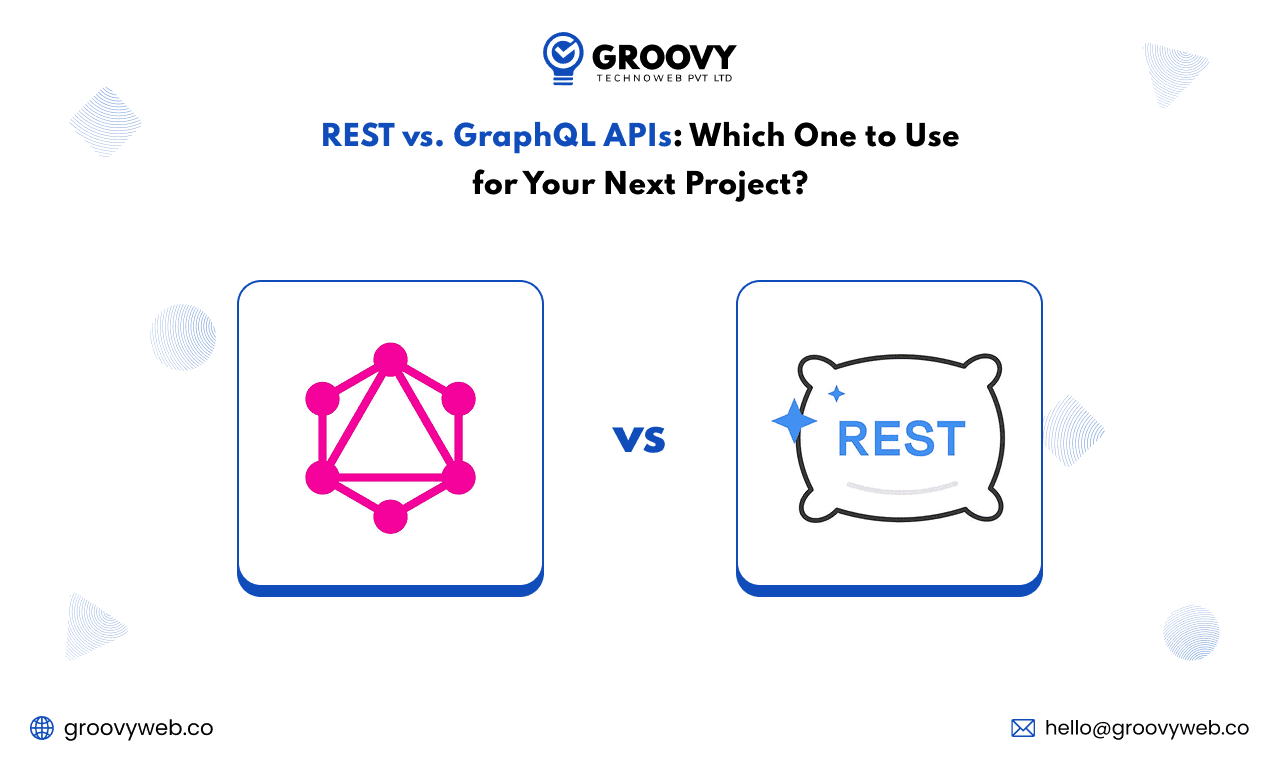
Quick Summary : The requirements of your project will determine whether to use GraphQL or REST. REST is a classic API type for small teams or MVPs with several endpoints and is simpler to design. On the other hand, GraphQL provides great developer control, quick fetching, and specific data queries, making it ideal for sophisticated applications and contemporary SaaS app development. GraphQL offers flexibility and scalability for feature-rich platforms, but REST is simpler to implement. GraphQL might provide long-term benefits if you're wondering how to develop a performance-optimized SaaS service. The choice should ultimately be based on your performance objectives, app complexity, and team size.
APIs have become the foundation of digital communication. Whether you are building a mobile app, a SAAS platform, or an e-commerce website, choosing the right API architecture can greatly affect the scalability and performance of your product. The two major API types dominate the landscape today: Rest and Graphql. But regarding REST vs Graphql, how do you decide which is right for your project?
Let’s break it down so that you can make an informed decision.
What is REST API?
REST (Representative State Transfer) is a prominent architectural model for creating network applications. It uses HTTP methods like GET, POST, PUT, DELETE, and restful API. Each resource is identified through the URL, and data is usually returned in JSON format.
The REST has been around for a long time and is widely supported at various technical heights, making it an ideal choice for traditional and enterprise-level applications. Many developers prefer to relax for their simplicity and compatibility with standard HTTP protocols.
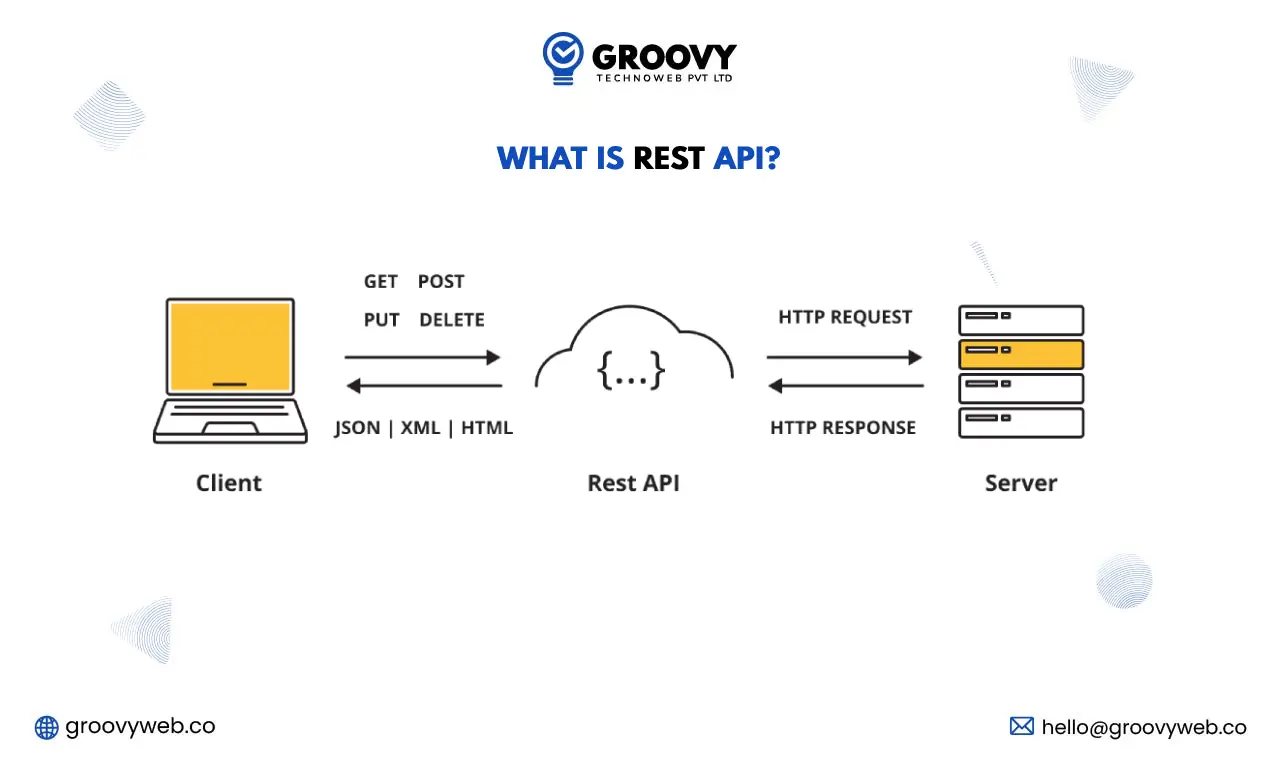
What is GraphQL API?
Facebook developed GraphQL, an API query language, to overcome some of REST’s limitations. GraphQL APIs expose a single endpoint rather than several endpoints for various resources. Clients send queries specifying exactly what data they need, and the server returns that data without any extras.
One of GraphQL’s primary benefits is its flexibility. Whether you’re building a mobile-first interface or a web dashboard, GraphQL allows front-end teams to pull only the required data, reducing over- and under-fetching.
Key Architectural Differences
The main distinction between REST and GraphQL lies in data fetching and endpoint structure.
- REST uses multiple endpoints, each representing a resource. You might have endpoints like /users, /posts, or /comments.
- GraphQL consolidates everything under a single endpoint, usually /GraphQL, and lets the client dictate the structure of the response.
GraphQL queries can retrieve nested and related data in one go, whereas REST might require multiple requests to different endpoints. This can make a huge difference in response time and network performance.
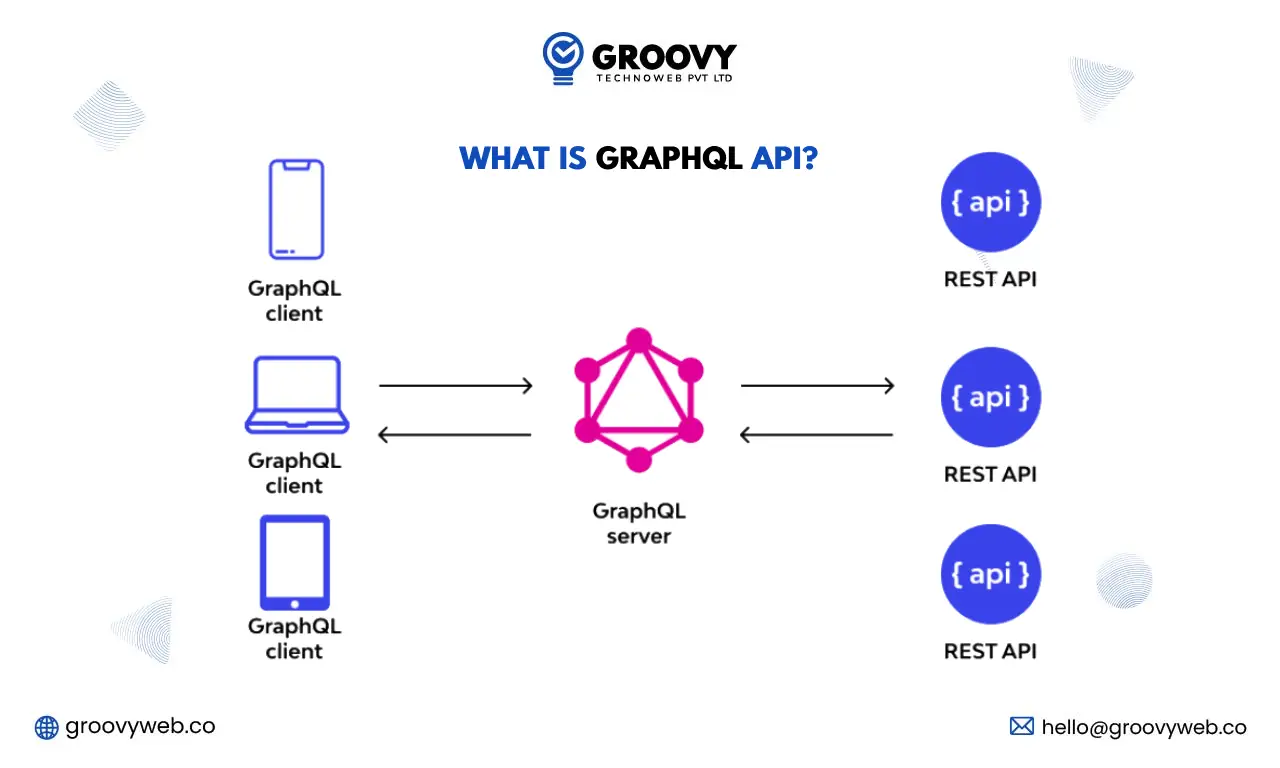
Performance and Data Fetching
In REST, over-fetching is common. For example, fetching a user might also pull in all associated data, even if it’s unnecessary for a specific view. This can slow down performance.
GraphQL is perfect for mobile apps with little bandwidth, allowing developers to retrieve only what they need. GraphQL is one of the best options for developing quick and effective SaaS application experiences.
REST can sometimes outperform GraphQL in scenarios where caching is vital. Tools like HTTP caching and CDNs work seamlessly with REST but require more setup with GraphQL.
Error Handling and Versioning
Standard HTTP status codes, which are simple to debug and comprehend, are commonly used by REST APIs for problem management. Additionally, they use URI versioning, such as /v1/products, to control backward compatibility and updates.
GraphQL doesn’t use versioning. Instead, developers deprecate fields over time, and clients adjust their queries accordingly. Errors in GraphQL are returned as part of the response object, which requires more nuanced handling.
In long-term SaaS app development, the version-less nature of GraphQL can lead to cleaner, more maintainable APIs—but only if properly managed.
Tooling, Ecosystem, & Community Support
REST has an established ecology. Tools like Postman, Swagger (OpenAPI), and Insomnia commonly accomplish RESTful service testing, documentation, and consumption. Numerous tutorials and community support are also a result of its widespread use.
Despite being more recent, GraphQL has rapidly caught up. Libraries like Apollo, Relay, and GraphiQL offer strong development lifecycle, caching, and testing support. For people who are not familiar with its ideas, GraphQL still has a more difficult learning curve.
Security Considerations
REST integrates effectively with conventional authentication techniques such as JSON Web Tokens (JWT) and OAuth 2.0. The REST space has a solid understanding of rate restriction, access control, and throttling.
GraphQL, however, introduces unique challenges. Since queries can be deeply nested, there’s a risk of overly complex or malicious queries affecting server performance. Security practices for GraphQL include query depth limiting, query cost analysis, and persistent queries.
Regardless of the architecture, ensuring API security is critical for any SaaS app development project.
When Should You Use REST?
- Ideal for CRUD Operations:
REST works best when your application revolves around Create, Read, Update, and Delete These operations map cleanly to HTTP methods and make implementation straightforward. - Familiarity Within Teams:
You don’t need to invest time in onboarding or training if your development staff is already familiar with REST. You can begin constructing right away using established conventions. - Strong Caching Support:
REST APIs are compatible with browser and CDN caching, helping improve load times and reduce server strain. This is valuable for apps requiring high-performance data delivery. - Supports API Versioning:
Versioning your APIs is made simple by REST, guaranteeing backward compatibility and smooth upgrades as your product develops over time. - Great for Predictable Development:
REST is a good choice when planning a project’s foundation. REST offers a solid starting point if you’re figuring out how to create SaaS application architecture with stability and clarity.
REST is a great starting point if you’re figuring out how to create SaaS application infrastructure with a predictable development process.
When Should You Use GraphQL?
GraphQL is particularly effective in the following scenarios:
- Multi-platform front-ends: GraphQL enables clients to request the precise data they require without overfetching or underfetching if your application serves several clients, such as web, mobile, or Internet of Things devices.
- The need for accurate and optimised data: Unlike REST, which returns certain data structures, GraphQL customers only request a tailor to regain the relevant areas, which leads to rapid performance and better efficiency.
- Rapid front-end development cycles: GraphQL provides flexibility when your user interface changes rapidly by enabling front-end teams to alter data requirements separately from the backend, which expedites iteration.
- Complex relationships in your data model: If your backend involves deeply nested or interrelated entities (e.g., users, orders, products), GraphQL handles these complex queries in a single request, reducing server load and API roundtrips.
- Bandwidth-sensitive environments: For apps with limited bandwidth (like mobile apps in remote areas), GraphQL reduces payload size by sending only what’s needed.
GraphQL enables fast iterations and better control over API responses for modern SaaS app development.
Real-World Examples
Companies such as Github, Shopify, and Facebook use GraphQL due to its flexibility and efficiency in providing their applications.
On the other hand, REST platforms such as Stripe and Paypal rely on APIs because they are documents that are safe and easy to use for cash. Interestingly, many technical companies employ a hybrid approach, which uses GraphQL for some services and GraphQL for others.
Understanding the strength of API types allows organisations to tailor their back strategy based on performance, safety, and developer experience.
Developer Experience & Team Considerations
- Learning Curve:
- Teams new to GraphQL should be prepared for a steeper learning curve.
- Understanding schema design, resolvers, query structure, and nested data fetching takes time.
- Developers need to shift from traditional RESTful thinking to a more declarative approach.
- REST is Beginner-Friendly:
- REST uses similar HTTP methods like GET, POST, PUT, and DELETE.
- Its simplicity makes it easier for junior developers or teams with limited API experience.
- Best suited for rapid development, MVPs, and small to mid-sized teams.
- GraphQL for Advanced Teams:
- For larger, more experienced development teams, GraphQL benefits
- It allows flexible queries, reduces over-fetching/under-fetching, and enhances front-end/back-end collaboration.
- Ideal for projects involving multiple clients (web, mobile apps) with complex data needs.
- Team Collaboration:
- GraphQL promotes stronger API contracts between teams.
- REST’s endpoint-based design might limit agility in rapidly changing interfaces.
- Use Case Matters:
- REST is often faster and more efficient when building simple CRUD-based applications.
- For data-driven platforms or SaaS app development where customisation and performance matter, GraphQL can offer long-term value.
- Project Scope & Time-to-Market:
- Small teams and short timelines benefit from REST’s simplicity.
- Large-scale applications with evolving data models may justify GraphQL’s initial investment.
- Integration & Tools:
- REST has widespread support and mature tooling (e.g., Postman, Swagger).
- GraphQL offers modern tools like Apollo, GraphiQL, and monitoring systems that are better suited for dynamic APIs.
This comparison helps you weigh developer readiness, project scale, and long-term maintainability when choosing between REST and GraphQL for your next project.
Comparison Table
| Feature | REST | GraphQL |
|---|---|---|
| Endpoints | Multiple endpoints for each resource (e.g., /users, /posts) | Single endpoint for all operations |
| Data Fetching | Fixed response structure; may require multiple calls | Custom queries return only what’s needed in one request |
| Tooling | Mature ecosystem (Postman, Swagger, Insomnia) | Modern tools (Apollo Client, GraphiQL, Relay) |
| Versioning | URI-based versioning (e.g., /api/v1/) | There is no need for versioning; it uses field deprecation |
| Caching | Straightforward HTTP caching & CDN-friendly | More complex due to dynamic queries |
| Learning Curve | Lower uses simple HTTP methods | Higher requires an understanding of schemas and query language |
| Error Handling | Standard HTTP status codes (200, 404, 500, etc.) | Errors are returned inside the response body |
| Flexibility | Limited: The client must accept what the server provides | High: Clients define exactly what data they need |
| Overfetching/Underfetching | Common; not always efficient | Eliminated; clients avoid both over-fetching and under-fetching |
| Real-Time Support | Requires workarounds like WebSockets | Supports subscriptions for real-time updates |
| Schema & Type Safety | There is no enforced schema for responses | Strong typing with enforced schema |
| Use in SaaS Apps | Well-suited for simple, consistent APIs | Ideal for complex, evolving SaaS platforms |
| Mobile Optimization | More bandwidth usage needs multiple round trips | Less bandwidth; single request for all required data |
| Batching Requests | Requires custom solutions or multiple calls | Supports built-in query batching |
This REST vs GraphQL breakdown can help developers and product teams evaluate which architecture best supports their project — especially when considering API types for SaaS app development or exploring GraphQL benefits while planning how to create SaaS application platforms efficiently.
Conclusion
In the debate of REST vs GraphQL, there is no one-size-fits-all solution. The best choice depends on your specific use case, team skills, and future scalability goals.
If you’re building a fast, modern product with diverse client requirements, GraphQL could offer the flexibility you need. If you’re optimising for stability, simplicity, and caching, REST is still a strong and reliable contender.
Understanding both API types is a key step for developers in figuring out how to create SaaS application solutions that scale. An ideal and more manageable product can be built on the foundation of a well-designed API architecture.
Written by: Ashok Sachdev
Ashok Sachdev is the Project Manager at Groovy Web who began his professional career as a programmer at the young age of 17. Ever since then he is actively growing, learning new things, and adapting to new roles and responsibilities at every step. Aside from being an app developer, he is highly admired for his project management skills by his clients.
Frequently Asked Questions
We hope these clear your doubts, but if you still have any questions, then feel free to write us on hello@groovyweb.coWhich API type is better for SaaS app development?
For modern Saas app development, graphQLl is often preferred because of its ability to handle complex questions with minimal data load. However, REST works well for simple use cases and quick MVPS. Understanding both API types helps in deciding how to create a SaaS application that is scalable and efficient from both the front and back.
What are the main GraphQL benefits for developers?
Some key GraphQL benefits include precise data fetching, reduced network calls, and improved frontend performance. It simplifies managing multiple data sources and allows strong typing through schemas. In the context of REST vs GraphQL, GraphQL often wins in flexibility, making it ideal for teams working on large-scale or complex SaaS app development.
Is REST still relevant when building modern applications?
Yes, REST remains relevant. It’s one of the most stable and widely used API types. REST offers a quicker setup with mature tools for teams focused on MVPs or wondering how to create a SaaS application quickly. In comparing REST vs GraphQL, REST stands out for its simplicity and ease of integration with existing systems.
How do I decide which API to use for my next SaaS project?
When selecting between Rest and GraphQL, assess your app's complexity, team expertise, and long-term requirements. Use REST for quick delivery or simple data models. Choose graphQL when constructing high adaptation, mobile-first design, or dynamic dashboard. Knowing the GraphQL benefits helps make smart decisions in modern SAAS app development.
Related Blog
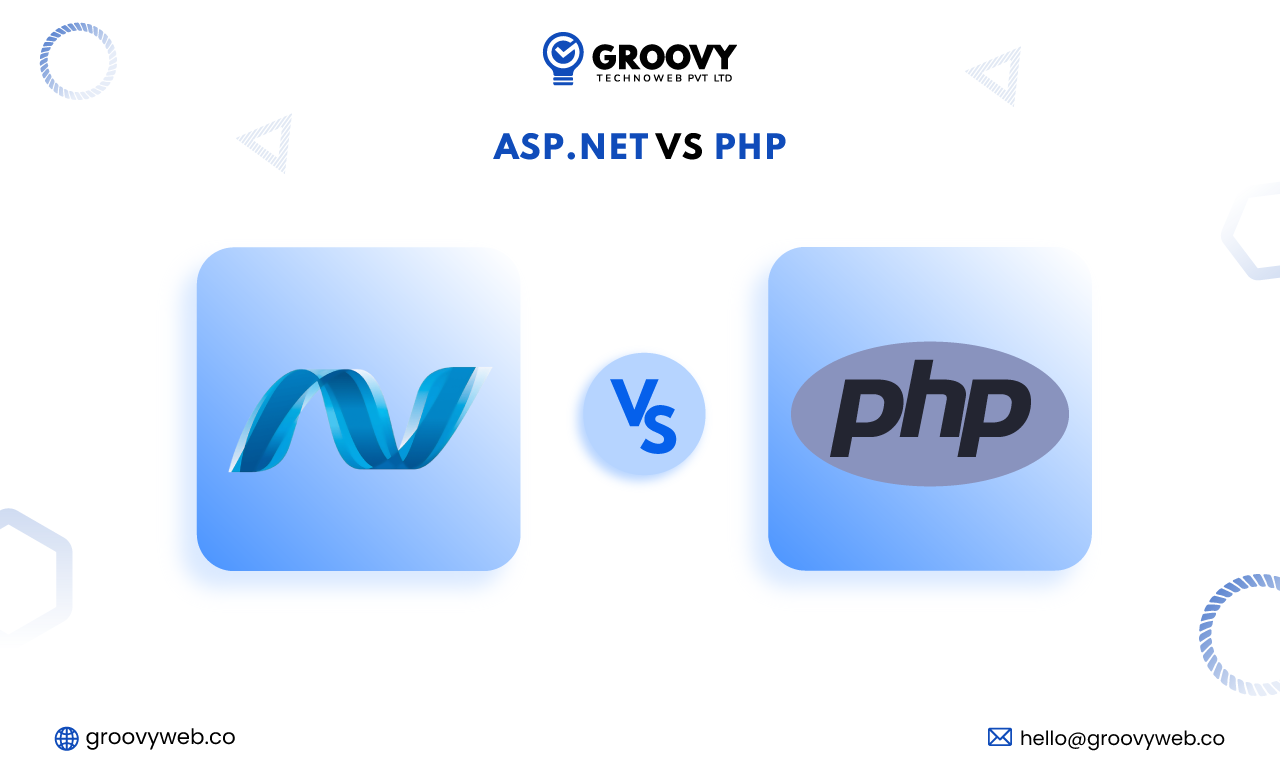
Ashok Sachdev
ASP.NET vs PHP - What to Choose for Your App Needs
Web App Development 14 Nov 2024 8 min read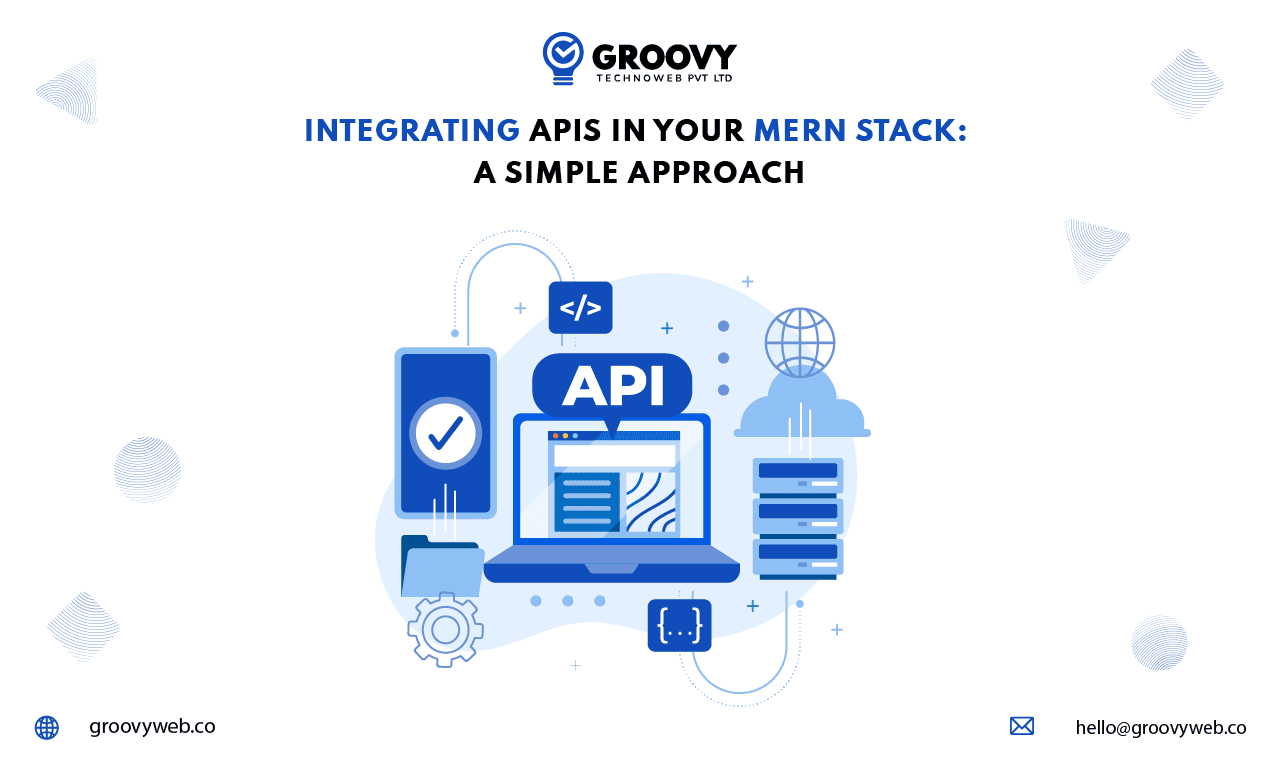
Nauman Pathan
Integrating APIs in Your MERN Stack: A Simple Approach
Web App Development 11 Feb 2025 12 min readSign up for the free Newsletter
For exclusive strategies not found on the blog
